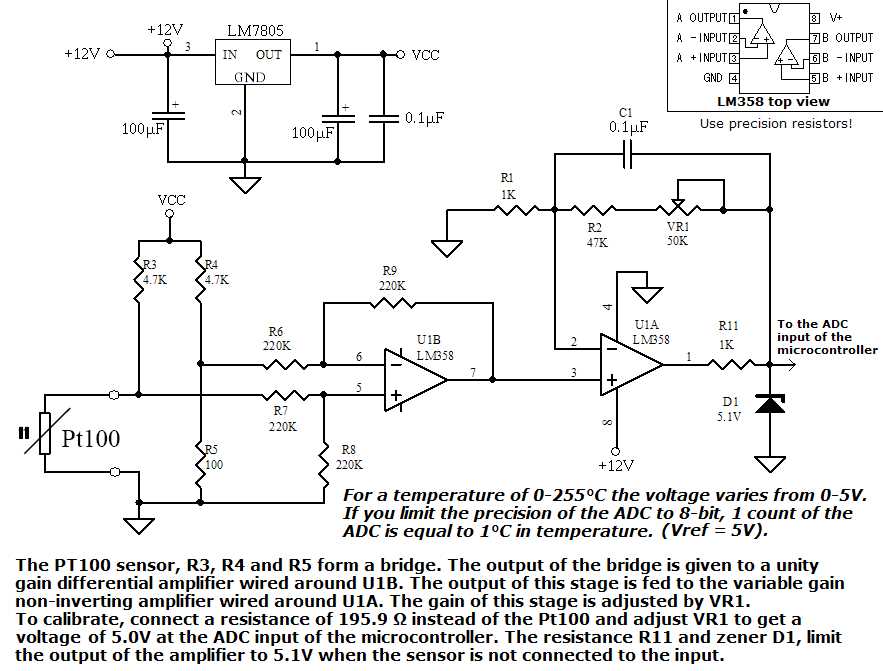
From industrial processes to scientific research, accurate temperature measurement is paramount in various fields. Imagine a sensor capable of providing highly reliable temperature readings with exceptional precision. This is where the pt1000 comes into play, offering an unparalleled level of accuracy that has revolutionized temperature sensing technology.
The pt1000, also known as the platinum resistance temperature detector (RTD), is a remarkable device widely used in numerous applications. Built with platinum wire wound into a resistance element, it exhibits excellent stability and linearity, making it a prime choice for demanding temperature measurement tasks.
One of the key advantages of the pt1000 is its ability to operate over a wide temperature range, spanning from sub-zero temperatures to extreme heat. This versatility allows it to thrive in various environments, whether it be monitoring cryogenic conditions or providing accurate readings in high-temperature industrial processes.
The pt1000’s precision is unparalleled, thanks to its unique resistance-temperature relationship. As temperature changes, the resistance of the platinum wire changes accordingly. By carefully calibrating and measuring this resistance, the true temperature can be determined with exceptional accuracy. With precise temperature data at their disposal, engineers and scientists can make informed decisions and optimize processes for enhanced performance and efficiency.
What is a Datasheet: A Guide to Understanding the PT1000 Sensor Datasheet
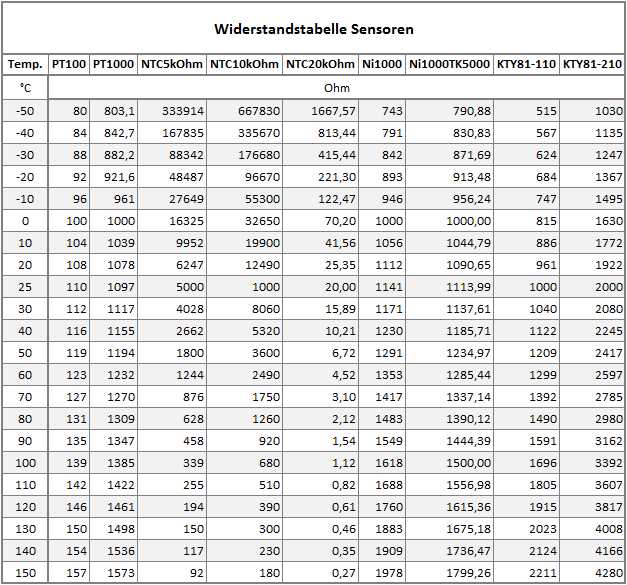
When researching and evaluating electronic components such as sensors, it is crucial to have a clear understanding of the datasheet. A datasheet serves as a comprehensive guide that provides vital information about the specifications, features, and performance of a particular component. In this article, we will explore the basics of datasheets and focus specifically on understanding the datasheet of the PT1000 sensor.
The Importance of Datasheets
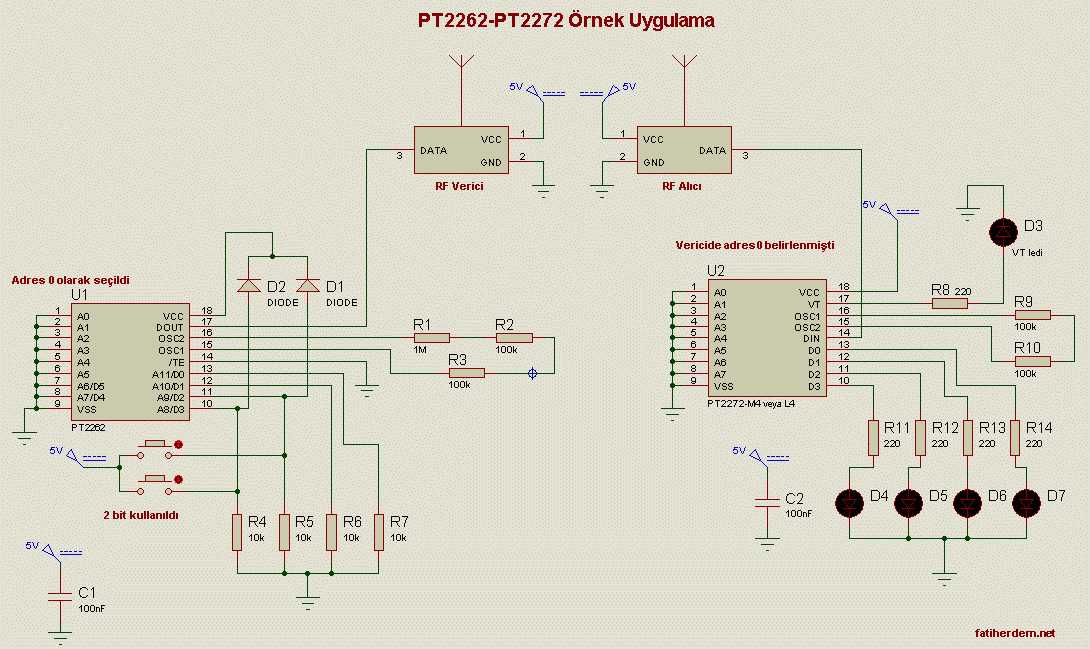
Datasheets are indispensable resources for engineers and technicians working with electronic components. They contain detailed technical information that enable users to assess and compare different components, ensuring they are suitable for their intended applications. Datasheets serve as a primary reference, offering insights into the performance characteristics, temperature range, accuracy, and other key attributes of a component.
By providing critical data, datasheets enable users to make informed decisions about component selection, helping to ensure compatibility, reliability, and optimal performance. They help users understand how to properly interface the component, what electrical signals it requires, and how to interpret the output. In essence, datasheets are an essential tool for designing and integrating components into electronic systems.
Understanding the PT1000 Sensor Datasheet
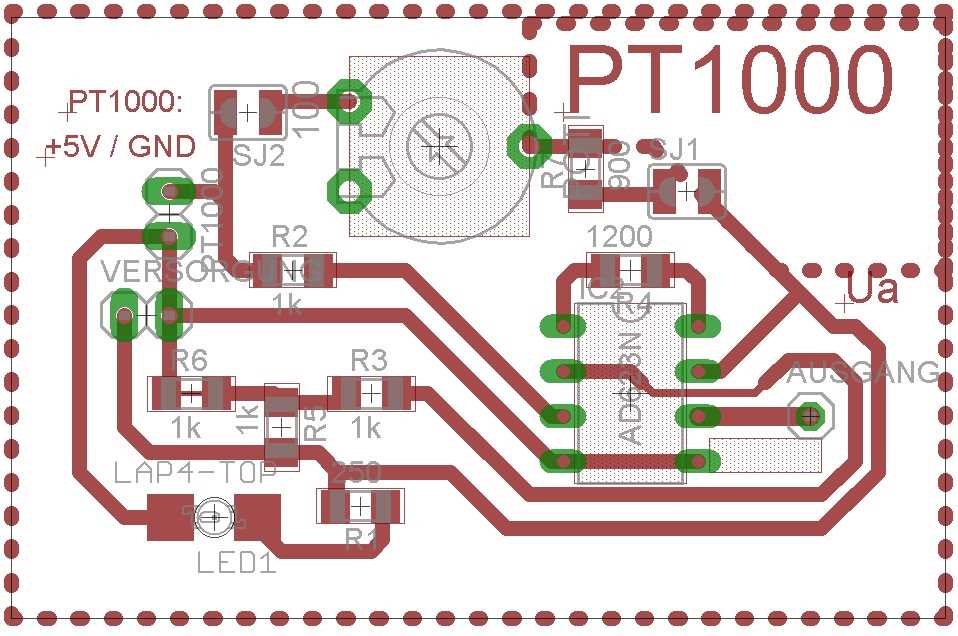
The PT1000 sensor is a popular Resistance Temperature Detector (RTD) that measures temperature with high accuracy. Its datasheet contains essential information that allows users to understand and utilize the sensor effectively. By examining the PT1000 datasheet, users can gain insight into its temperature range, resistance values, response time, and tolerance.
The datasheet also provides key specifications, such as the accuracy of the PT1000 sensor at different temperature ranges. Users can learn how to properly wire and connect the sensor by referring to the electrical characteristics and pinout diagrams available in the datasheet. Additionally, the PT1000 datasheet often includes application notes, which provide guidance on calibration procedures, recommended circuit configurations, and considerations for temperature compensation.
By thoroughly understanding the PT1000 sensor datasheet, users can confidently incorporate the sensor into their projects and ensure accurate temperature measurements. The datasheet acts as a valuable resource that helps users harness the full potential of the PT1000 sensor while considering important factors such as temperature range, accuracy requirements, and application-specific considerations.
The Significance of a Datasheet in Electronics
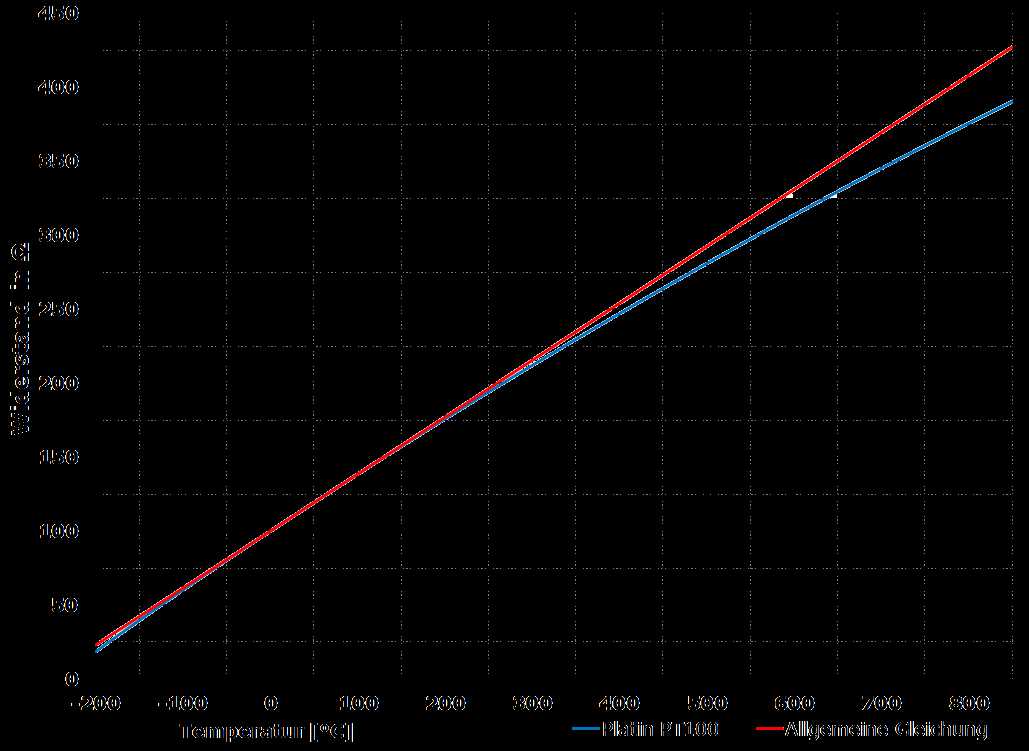
In the world of electronics, the availability of accurate and comprehensive information is vital for engineers, designers, and manufacturers. One important resource that plays a significant role in providing such information is a datasheet. Serving as a comprehensive guide, a datasheet offers valuable details about a specific electronic component or device, enabling professionals to make informed decisions, design circuits, and troubleshoot issues effectively.
A datasheet acts as a bridge between the theoretical understanding of electronic components and their practical application. It contains valuable data like electrical characteristics, performance specifications, mechanical dimensions, application notes, and other essential information about the component. By referring to a datasheet, professionals can gain insights into the component’s functionality, limitations, and compatibility with other elements in a circuit.
Furthermore, a datasheet enables engineers to compare different components based on their specifications, making it easier to select the most suitable option for a particular application. It provides detailed information on parameters such as voltage ratings, current ratings, temperature ranges, and operating conditions, allowing engineers to ensure optimal performance and reliability of their designs.
In addition to serving as a source of technical information, a datasheet also helps in ensuring compliance with industry standards and regulations. It provides important data regarding certifications, safety precautions, environmental compliance, and other requirements. This enables designers and manufacturers to fulfill legal and regulatory obligations and ensures that their products meet the necessary quality and safety standards.
| Key Benefits of a Datasheet: |
| 1. Facilitates informed decision-making |
| 2. Enables accurate circuit design |
| 3. Aids in troubleshooting and problem-solving |
| 4. Helps in component selection and comparison |
| 5. Ensures compliance with industry standards |
In summary, a datasheet is an indispensable resource in the field of electronics. It empowers professionals with the necessary information to make informed decisions, design robust circuits, troubleshoot effectively, and comply with industry standards. By utilizing the wealth of information provided in datasheets, engineers and designers can enhance their productivity, optimize their designs, and deliver high-quality electronic products.
Understanding the PT1000 Sensor Datasheet: Key Specifications and Parameters
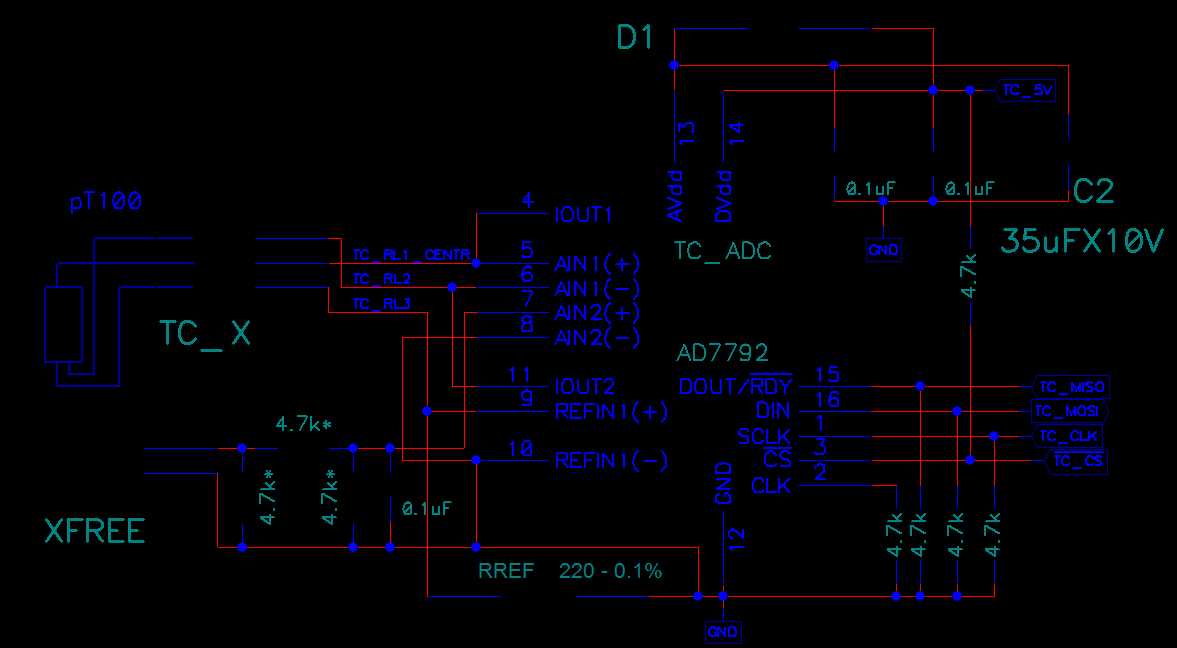
When evaluating the PT1000 sensor for your application, it is essential to thoroughly understand the key specifications and parameters outlined in the sensor’s datasheet. In this section, we will delve into the important details that will enable you to make an informed decision regarding the suitability of the PT1000 sensor for your specific needs.
1. Temperature Range: The temperature range is a vital parameter to consider when selecting a PT1000 sensor. It is important to ascertain the minimum and maximum temperatures that the sensor can accurately measure. Additionally, it is crucial to understand the operating temperature range and the temperature coefficient of resistance to ensure reliable performance in your desired temperature range.
2. Accuracy and Sensitivity: The accuracy of the PT1000 sensor directly affects the precision of temperature measurements. Look for the sensor’s stated accuracy, which quantifies the allowable deviation from the true temperature value. The sensitivity or sensitivity coefficient determines the change in resistance per degree Celsius, allowing for precise temperature calculations.
3. Response Time: The response time indicates how quickly the PT1000 sensor can detect and report temperature changes. A faster response time ensures real-time monitoring and quicker adjustments in temperature-controlled systems. Understanding the response time of the sensor ensures that it can meet the requirements of your application’s time-sensitive processes.
4. Calibration: Calibration is essential in ensuring the accuracy and reliability of a PT1000 sensor. Look for information on calibration protocols and recommended calibration intervals in the datasheet. Understanding the calibration requirements enables you to maintain the sensor’s performance over time and make any necessary adjustments.
5. Environmental Considerations: The datasheet should provide information regarding the PT1000 sensor’s ability to withstand harsh environments. Look for details such as the sensor’s ingress protection (IP) rating and resistance to moisture, vibration, and other external factors that may impact its performance and longevity.
6. Mounting Options: Consider the mounting options outlined in the PT1000 sensor datasheet. Understanding the available mounting methods allows for seamless integration into your application, ensuring optimal sensor performance and ease of installation.
Conclusion: By thoroughly understanding the key specifications and parameters outlined in the PT1000 sensor datasheet, you can make an educated decision when selecting a sensor for your specific application. Consider the temperature range, accuracy, sensitivity, response time, calibration requirements, environmental considerations, and mounting options to ensure the sensor meets your requirements and offers reliable and accurate temperature measurements.
How to Interpret and Utilize the Data Provided in the PT1000 Datasheet
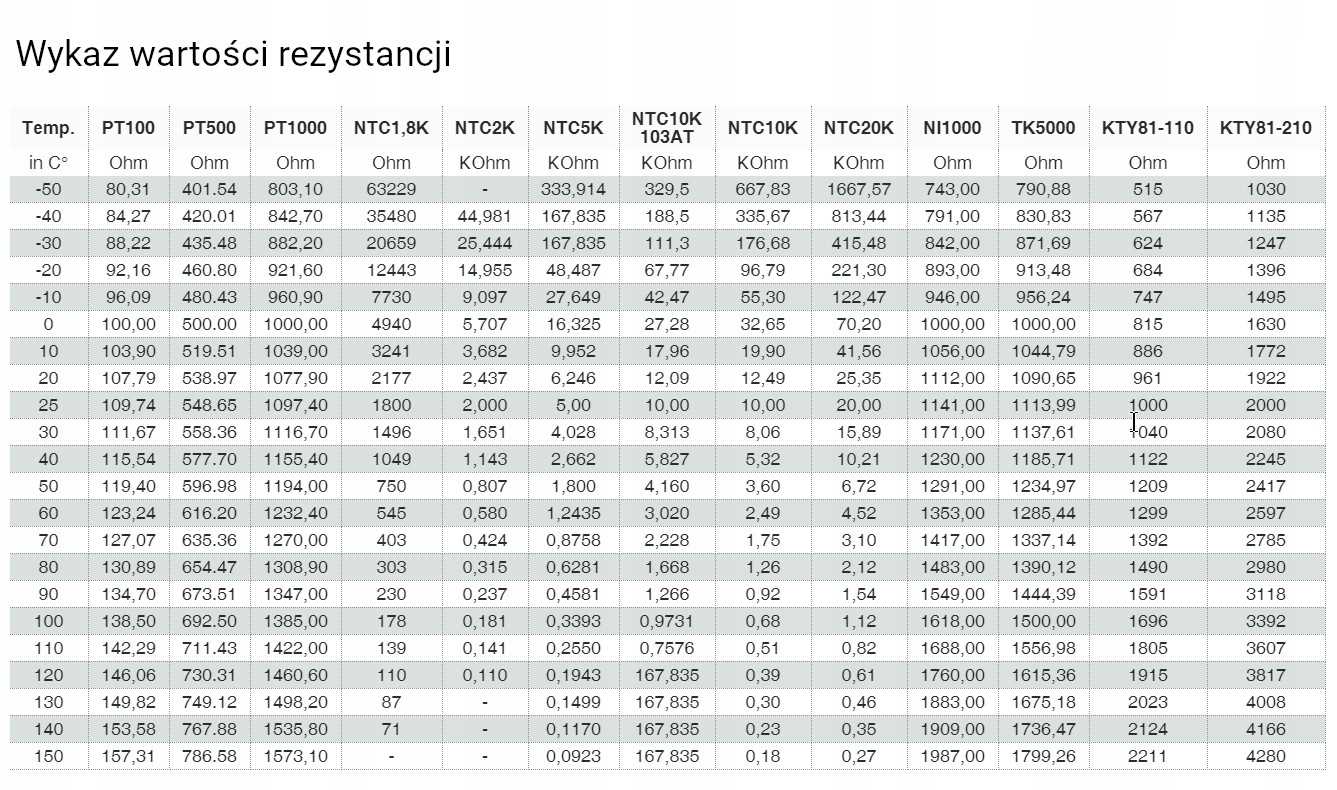
Within the comprehensive documentation for the PT1000 temperature sensor, there is a wealth of important information that can assist users in effectively interpreting and utilizing the data provided. Understanding this data is essential for accurately measuring temperature and making informed decisions. In this section, we will explore how to navigate and utilize the valuable information contained within the PT1000 datasheet.
Understanding Sensor Specifications

One crucial aspect of the PT1000 datasheet is the presentation of sensor specifications. These specifications provide valuable details about the sensor’s performance characteristics, such as temperature range, accuracy, stability, and response time. By carefully reviewing and understanding these specifications, users can determine whether the PT1000 is suitable for their intended application and ensure reliable temperature measurements.
Interpreting Temperature-Resistance Tables

The PT1000 datasheet often includes temperature-resistance tables that depict the relationship between temperature and resistance values generated by the sensor. Interpreting these tables allows users to convert resistance readings into corresponding temperature measurements. By following the provided instructions and employing interpolation techniques, users can obtain precise temperature data from the PT1000 sensor, enabling them to make accurate temperature readings in various environments.
Furthermore, the datasheet might also provide mathematical equations or calibration coefficients that facilitate temperature calculations based on resistance values. Understanding these equations and coefficients is crucial for accurate temperature interpretation, calibration, and compensation.
By thoroughly comprehending and utilizing the data provided within the PT1000 datasheet, users can harness the full potential of the sensor, ensure accurate temperature measurements, and make informed decisions regarding its integration into their systems or applications. Familiarity with this documentation is essential for achieving reliable and consistent temperature monitoring in a wide range of industrial and scientific settings.